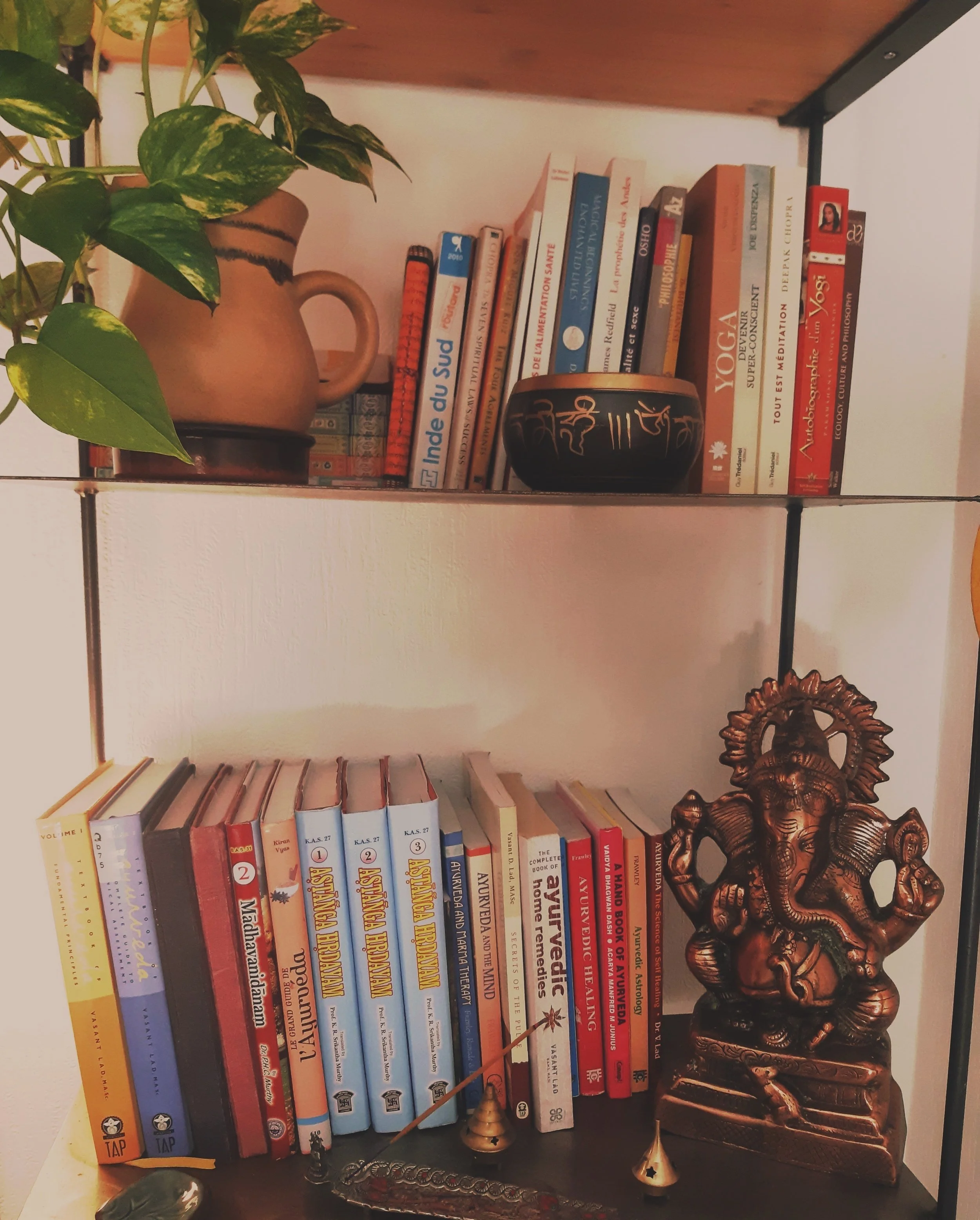
आयुर्वेद
What is Āyurveda?
In a world where health is often reduced to isolated symptoms and quick fixes, Ayurveda invites us to pause.
It offers a way of understanding ourselves, our tendencies, imbalances, habits, and deep potential for healing. Rooted in over 5,000 years of observation and practice, Ayurveda is the traditional medicine of India.
Its name comes from Sanskrit: Ayus, meaning life, and Veda, meaning knowledge or wisdom. At its heart, Ayurveda is the science of life.
Unlike many modern approaches, Ayurveda doesn’t separate body from mind. It sees the human being as a living expression of nature’s elements — space, air, fire, water, and earth — and works to balance them in body, mind, and spirit.
When we experience symptoms, whether digestive discomfort, skin flare-ups, anxiety, or fatigue — Ayurveda doesn’t suppress them. It asks: Why is this happening? What is out of balance? What needs tending to? In this way, disease is the messenger that tells a story of what is happening internally.
Understanding Your Constitution (Dosha)
Ayurveda recognises that each of us is born with a unique balance of the three doshas:
Vata (air and ether): mobile, dry, light
Pitta (fire and water): hot, sharp, intense
Kapha (earth and water): heavy, stable, cool
Your dosha guides how you digest food, process emotion, respond to stress, and even how you sleep. Knowing your constitution isn’t about putting yourself in a box — it’s about understanding your nature so you can care for yourself wisely.
Daily Practices
In Ayurveda, healing is not a quick fix. It is not about taking a pill and moving on. Lasting health depends on your daily effort, in collaboration with the guidance you receive.
Dinacharya, or daily routine, is central to this process. Rising before sunrise attunes you to natural cycles. Cleansing the tongue removes toxins. Abhyanga, or oil massage, steadies the body and mind. Eating your main meal at midday supports digestion. Quiet evenings prepare you for restful sleep.
Practised consistently, these rituals regulate digestion, calm the nervous system, and build resilience. This is how Ayurveda creates sustainable health, through the power of what you do each day.
Food As Medicine
In Ayurveda, food is never separate from medicine. Every meal is an opportunity to support your digestion (agni) and nourish your tissues (dhatus). Eating in with the seasons, according to your dosha, and with awareness, is a powerful daily medicine.
Warm, grounding meals may calm an anxious mind. Cooling, bitter foods may soothe inflammation. Light, stimulating spices may awaken sluggish energy. There’s no one-size-fits-all — Ayurveda encourages personalised care, guided by your current state and deeper constitution.
The Wisdom of Prevention
Perhaps the most revolutionary aspect of Ayurveda is its focus on prevention. It teaches us to catch imbalance early, before it becomes illness, by observing subtle signs: a coating on the tongue, a change in appetite, disturbed sleep. When we’re attuned to these signals, healing becomes less of a battle and more of a return.
Interested in learning more about Ayurveda?
Click here to discover more
Begin Where You Are
Ayurveda doesn’t demand that you change your life overnight. It asks for presence. A willingness to listen. A few small shifts, consistently made, can bring remarkable transformation. Whether you're here out of curiosity or seeking deeper healing, let this be a beginning, a doorway back to yourself.





